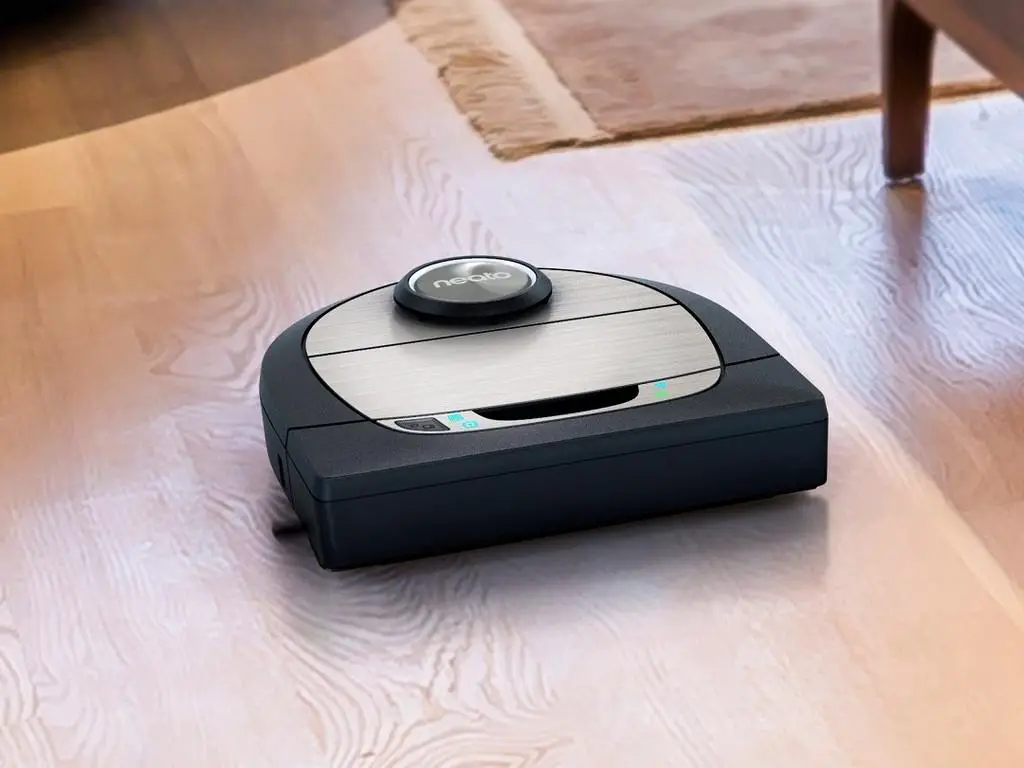How Does Roomba Know to Stop Cleaning: Tech Mystery Reveal
We’ve been fascinated by Roombas since they hit the market in 2002. Not only are these round mystery vacuums capable of cleaning our floors without us, but they also know when to stop. When the mini-vacuums’ power gets low, or it finishes, then it heads back to the dock to recharge. Luckily, all you have to do is empty it and make sure the dock is nearby. You get a clean floor with almost no need to put in the work, which is delightful. How can they tell what to do? It’s not magic, of course, but technology in action. A Roomba is a marvel of science, with sensors that help it find everything from dust to staircases. I’ll explain how these tech-wonders work, and how to use them to your best advantage, so your home stays cleaner all the time.
How does Roomba know to stop cleaning? Roomba uses infrared sensors to figure out where dirt is located, so when there’s none left, it goes ‘home’ to dock. Additionally, it maps the rooms in your home. Resultantly, it ‘knows’ where it is and remembers where it can look for the dirt.
How Roombas Know Where to Clean
Watching a Roomba work is fascinating, and watching it stop, or decide to go back over an especially dirty area is a little strange. How does it seem always to know what to do? Are they effective?
Before we get into why having a Roomba is a great idea, let’s talk about how they work. These mighty little machines use several different types of sensors, among their other sensible design features.
A bumper helps the device when it collides with obstacles. The bumper prevents damage to the machine when it comes into contact with walls or furniture. Moreover, it gives a ‘front’ to the circular design.
I recommend the iRobot Roomba i7 from Amazon. The automatic dirt disposal makes it easier than ever to keep your floors clean. Moreover, you can program Out Zones, to keep your i7 away from certain areas if you prefer it avoids them. The Smart Mapping technology and patented iAdapt 3.0 technology with vSLAM navigation uses thousands of points of data to give you the most complete and accurate coverage. Find out more by clicking here.
Sensors
The Roomba has several different types of sensors to help it decide where to go. Furthermore, they help it figure out where not to travel. An infrared receiver on top picks up the signals that tell your vacuum what the room looks like everywhere.
To map the area, it uses the light as a bat uses sonar. Sending out a wave to show it the shape of the room, and reading the returns helps your Roomba decide what it can reach, and he far it needs to travel.
Additionally, there are ‘cliff’ sensors and object sensors. The cliff sensor tells the Roomba if there’s a drop-off, so it doesn’t take a nosedive down your stairs. The object sensors, however, have two jobs.
First, they show the device walls and other features in the room. Preventing collisions helps prolong the life of the machine. Secondly, these sensitive monitors can ‘see’ the dirt on your floor.
When a Roomba goes back to an area more than once, it’s not a glitch. The machine has determined that area is unusually dirty. It may go in circles, or return after completing part or all of its routine. That’s normal. Luckily, it only means that the spot was extra dirty.
For all that it often seems your Roomba is wandering aimlessly, it’s not. The device knows what room it’s in. More importantly, it also knows where there are irregularities on the floor (dirt and dust) that need attention.
Help Your Roomba Work Better
It’s easier than you think to help your Roomba do the best possible job. With a few common-sense tips, you’ll have clean floors all the time, with much less work. Follow these steps to get tidy fast.
- Roomba can’t go under objects. Grab a broom and sweep under cabinets, couches, and similar obstacles.
- Pick up the large messes. Like any Vacuum, a Roomba isn’t meant to suck up coins or other large debris. Take the time to do a quick inspection and grab any large pieces you spot before turning your Roomba on to do its work.
- Move things out of the way. If you have footstools or other objects around the floor, you’ll want to move them while your machine does its job. Otherwise, it may miss some of the mess.
- Light is essential. Although a Roomba has sensors, it doesn’t work well in the dark. You’ll need to have some light wherever you’re running your robotic vacuum.
- Make sure it’s fully charged before you start cleaning.
- Don’t forget to empty your Roomba. Recent models like the iRobot Roomba i7+ can self-empty. However, most models need you to dump out the mess, or they’ll simply run out of storage space.
- Roombas work best on hard floors. While this ingenious device may be able to handle some carpet or rugs, it’s much better at keeping smooth floors clean.
- Stay out of the way. For best results, keep everyone out of the way while your robotic vacuum does its job. Have pets and children play somewhere else.
- Be aware of the noise. A Roomba can put out up to seventy decibels of sound. Although that’s far quieter than most upright vacuums, you may want to take your conversations elsewhere.
- Leave the dock nearby. Not only should you place the charger near where the Roomba is working, but you mustn’t move it while the machine is at work.
In addition to these useful tips, did you know a Roomba can work on multiple levels of the same house? You can start in the basement and have your vacuum clean all the way up to your attic. However, it can’t climb stairs.
You’ll have to transport it to each level yourself. Make sure you allow your robotic vacuum to charge fully before starting it on the next level of the house. Fortunately, it’s a lot easier than lugging a traditional vacuum cleaner up and down the stairs.
Why Roombas Stop
There are two times a Roomba knows to stop cleaning. First, your robot vacuum can stop if it runs out of power. Although these smart machines know that they need to go ‘home’ when the power gets low, accidents can happen.
If you move the charging dock while your Roomba is cleaning, it could have trouble finding the charger. More rarely, like all machines, the sensors or batteries can have minor glitches. In this case, it’s time to have your vacuum serviced.
Secondly, when the job is done, a Roomba will stop. Because all those sensors let it ‘see,’ your device can accurately gauge how dirty the area is, and clean up. You may notice your vacuum makes a spiral from the center of the room and then explores along the walls and edges of furniture. Smart mapping technology and a cleaning algorithm tell your robot where it needs to clean.
While earlier models had trouble with carpet or black surfaces, the iRobot Roomba 960 can tackle the tough messes. With five-times the pick-up of the Six-Hundred Series, this is an even more powerful cleaner. Furthermore, the dual multi-surface rubber brushes help this Roomba stay in contact with hard floors and carpets. Read the outstanding reviews on Amazon right here.
Keep Your Roomba Going (Maintenance)
Although Roombas are smart robots that know when the job is done, they do need some TLC from you. You can have clean floors with a great robot vacuum that works for years. However, you need to take care of regular maintenance.
First, you need to empty the bin. Even the self-emptying models deposit dirt and dust in a container. Your Roomba can’t take out the trash (yet). The filter and brushes also need weekly cleaning.
If you have pets or unusually high traffic, then you may need to clean the brushes more often. Filters typically last the whole fourteen days, but it wouldn’t hurt to do the extra check.
The Full-Bin Sensors on the more recent models need cleaning every couple of weeks. The Extractors are similar. Once a week, or more depending on the level of mess, that’s normal for you.
Once a month, you need to clean off several of the parts. The Cliff sensors, charging contacts, floor sensor, and side brush are all examples of monthly cleaning needs. Likewise, the iAdapt Localization Sensor needs a monthly wipedown.
It’s essential to make sure you only use approved cleaning products. You don’t want to damage or break your Roomba with care. Fortunately, you can check the manual or Homesupport at iRobot to find out what works best on each surface.
Don’t let the name fool you. The iRobot Roomba E5 is more potent than the Six-Hundred series. The high-efficiency filter can trap up to ninety-nine percent of pet allergens. Plus, it will run for an hour and a half before docking to recharge, so large spaces are no problem. Have yours delivered from Amazon when you order here.
Final Thoughts
The Roomba may seem simple, but it’s smarter than you’d expect and knows precisely when to stop cleaning. Avoid wasting time and energy on old fashioned, heavy upright vacuums. Having a clean floor doesn’t need to be complicated.
Whether you have one floor, or five, a Roomba can handle the mess. Just remember to charge it fully between cleanings, and give it some light to work by for best results. These robot vacuums are surprisingly powerful.
Especially if you have dust allergies or pets, a high-quality Roomba vacuum will help keep you healthy. A clean home is essential, but it can be easier than you think.

